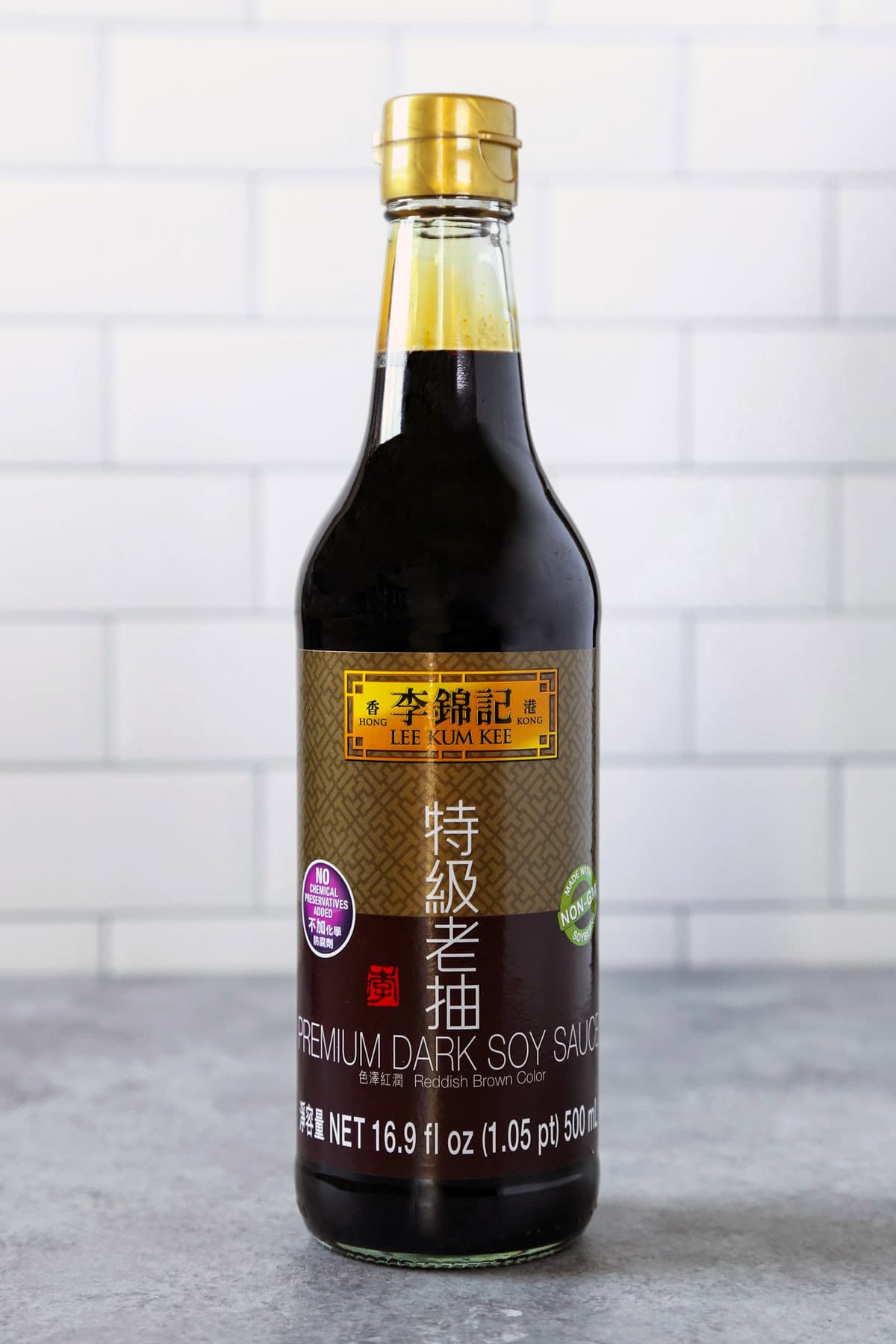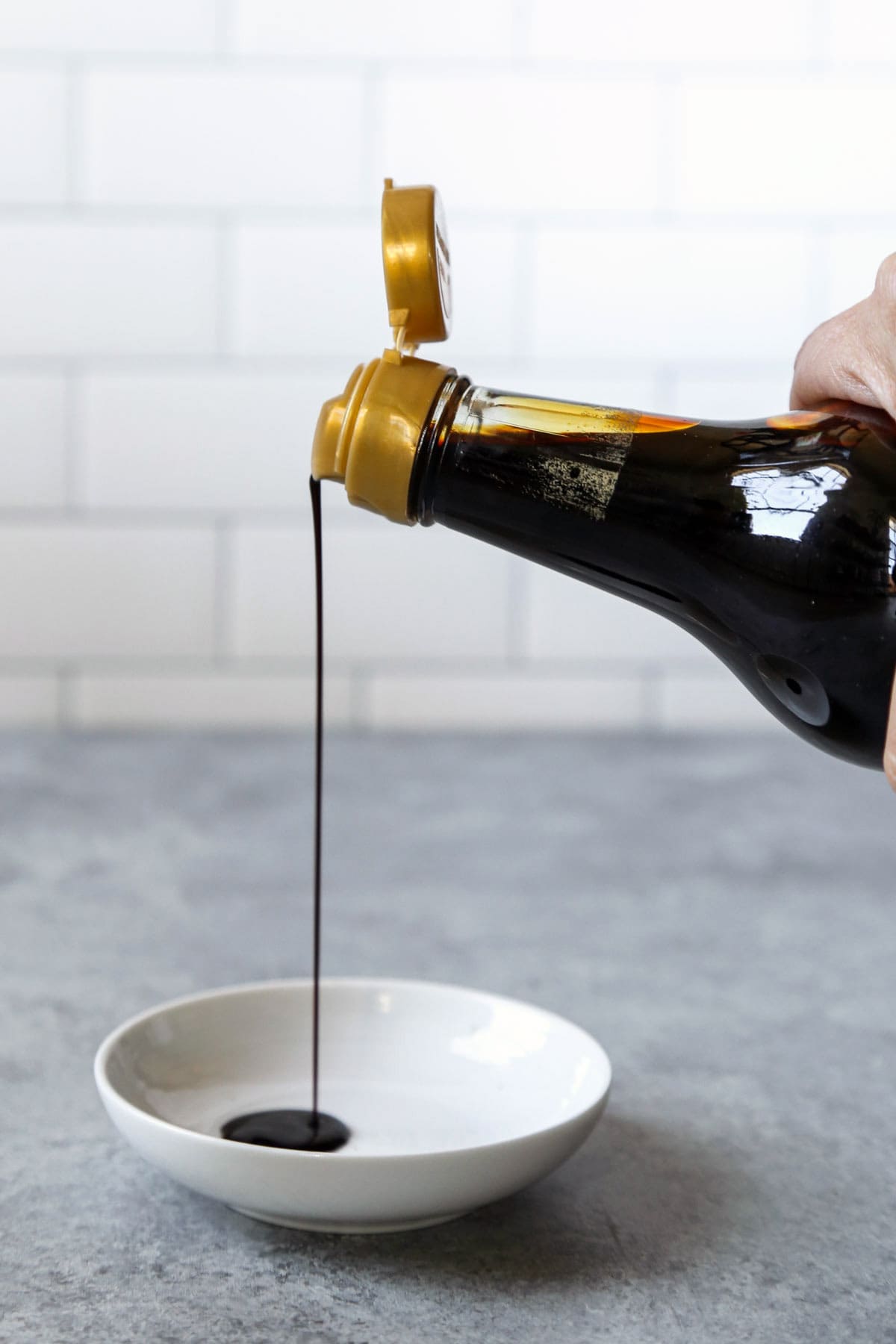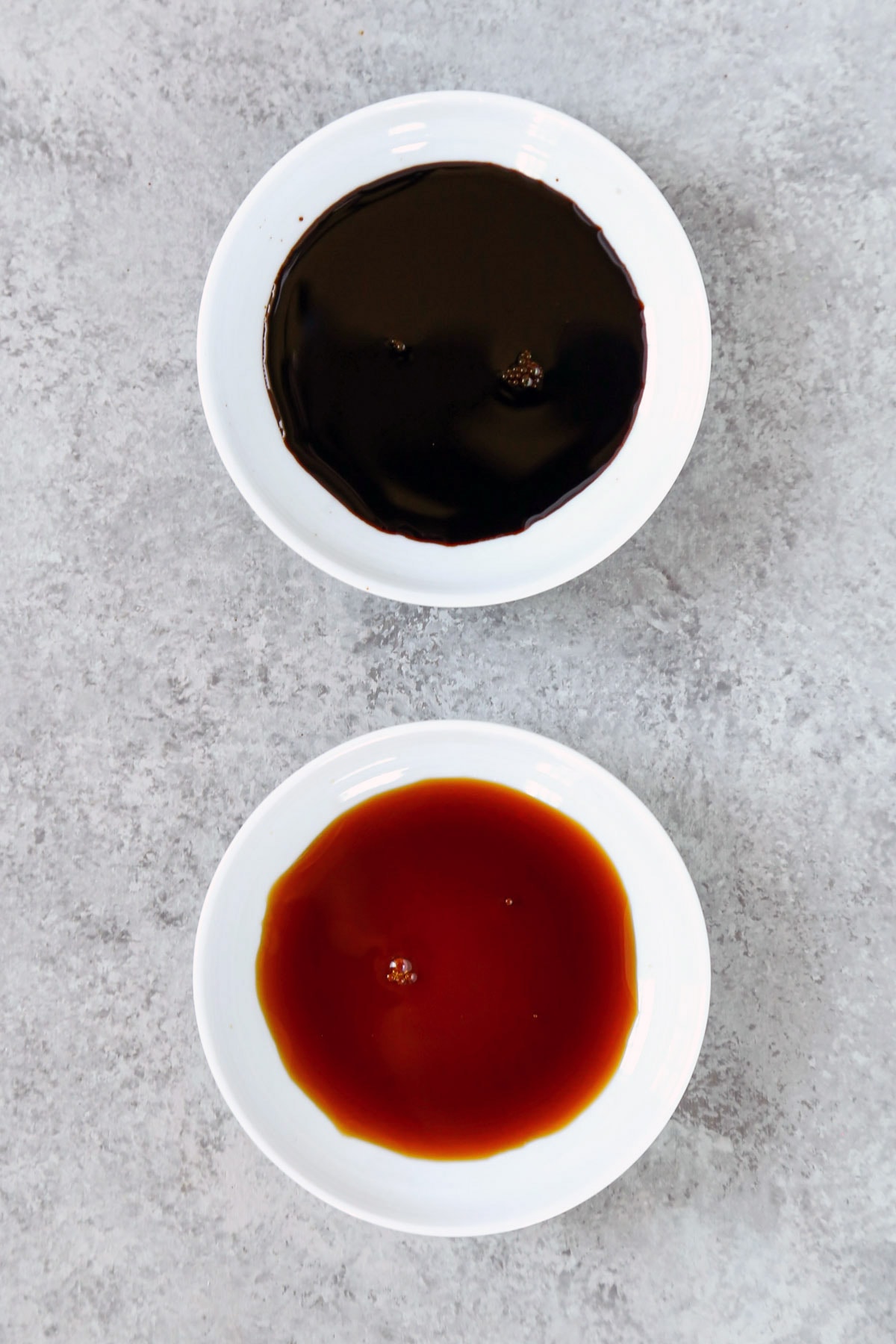Dark soy sauce is used in both Chinese and Thai cooking. Get to know this essential ingredient, when to use it – along with substitutes you can use when you don’t have dark soy handy.

What is Dark Soy Sauce
Dark soy sauce is a thick soy sauce with a mildly salty essence and sweet undertones. Made with a heavier brine than regular soy sauce, it is used as both a flavoring and food coloring – introducing a deep brown, tawny color to food.
Light vs Dark Soy Sauce
Both all purpose Chinese soy sauce and Japanese shoyu have a savory, salty umami flavor with a light consistency. It is commonly used in cooking and as part of a dipping sauce or stand-alone condiment.
By contrast, dark soy sauce is thicker with a sweeter taste, making it ideal to use both as an ingredient in marinades – and as a savory food coloring. While it tastes less salty than Japanese soy sauce, many dark soy sauces actually have a higher level of sodium which is somewhat masked by the sweetness.
Both types are produced from fermented soybeans, salt, molds and sometimes wheat. However, the fermentation process for dark soy is a little longer and produces a liquid which is thicker and sweeter.

Types of Dark Soy Sauce
There are multiple types of dark soy, so let’s take a look at a few.
- Chinese Dark Soy: A bit sweeter and darker – with a thicker viscosity than regular soy sauce. It not only flavors your food, it gives a darker overall appearance to your braised dishes, fried rice and stir-fries. Adding even a little can introduce a pleasing, restaurant quality dark caramel color.
- Mushroom Flavored Dark Soy Sauce: Umami flavors really come to the forefront with soy sauce brewed with mushrooms. While much of this will come down to your personal preference for mushroom flavor, I find that this sauce is compatible with almost any recipe that calls for traditional dark soy.
- Double Black Soy Sauce: Dark soy with the addition of molasses – which gives the mixture an even thicker texture and sweeter taste.
- Thai Dark Soy Sauce: Sweetened with palm sugar, this is similar to the flavor of Chinese dark soy. Some brands are a bit sweeter than others. Keep in mind that Thai dark soy is different than Thai sweet soy sauce or Indonesian kecap manis which are both significantly sweeter.
Dark Soy Sauce Brands and Where to Buy
These days it’s fairly easy to track down a ton of different types of soy sauce at many Asian grocery stores and markets. Here are a few commonly used brands along with Amazon links to shop.
- Chinese Dark Soy Sauce: Lee Kum Kee
- Mushroom Flavored Dark Soy: Pearl River Bridge
- Thai Black Soy Sauce: Healthy Boy

How to Store
Store dark soy sauce in a cool, dry place – away from direct sunlight – like a cupboard or pantry. You don’t need to refrigerate soy sauce.
Recipes That Use Dark Soy
Good Substitute for Dark Soy Sauce
When following a recipe that only calls for a small amount of dark soy sauce, it’s probably there primarily for the darker color. If the amber brown caramel color isn’t super important to your stir fry, just use regular or light soy sauce. The end result will look lighter, but be just as tasty.
For recipes that call for significant amounts of dark soy, here are a few workarounds to try:
- In a pinch, I’ve used mushroom flavored dark soy in place of regular dark soy sauce and I actually couldn’t tell much of a difference in the finished dish. Plus, I love mushrooms!
- Mixing a small bit of oyster sauce with regular soy sauce is a rough and ready alternative. But keep in mind, adding oyster sauce will change the actual flavor of your overall recipe – as it is sweet and salty with significant marine notes.
- For a closer alternative, mix 3 tablespoons of regular soy sauce with 1/2 tablespoon of molasses. The color is spot on – and the flavor is fairly close to the real deal.
As with any homemade substitutions, add the above suggestions to your dish slowly (tasting as you go) as the strength and taste will vary from traditional Chinese dark soy sauce and sweeter Thai dark soy.














